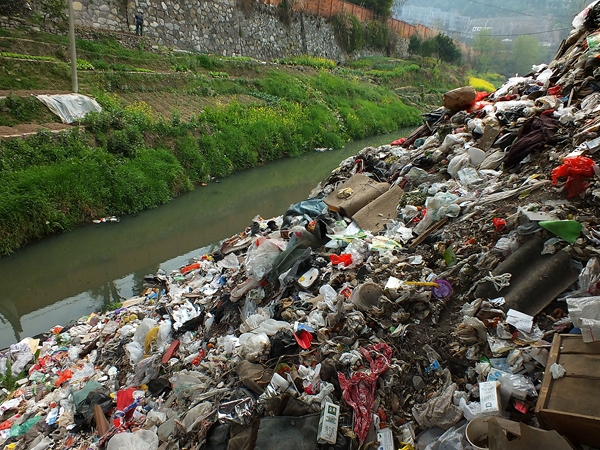 |
|
A river in Yichang, Central China's Hubei province, is severely polluted with garbage. [Photo/asianewsphoto] |
The government issued an action plan last week to fight water pollution. Comprising more than 200 measures, the plan aims to tackle almost all water pollution problems, details the accountability system, and sets its deadline and objective.
China's per capita water availability is only one-fourth of the world average. More than two-thirds of China's population lives in areas that seriously lack water. The over-exploitation of groundwater has caused land subsidence in some urban areas. And most of the country's rivers and lakes are polluted.
If the action plan is well implemented, the overall water quality in China is likely to improve in 20 years. A similar plan to check air pollution was released in 2013, and the first survey on soil pollution was completed last year. The Ministry of Environmental Protection released an action plan last month to fight soil pollution, which is likely to be approved by the central authorities after some revisions.
China also amended its toothless Law on Environmental Protection and started strictly enforcing it this year, which, like the action plans, says polluters have to pay for the damage they cause.
The United States accomplished the environmental transition from the 1950s to 1970s, when pollution became a big threat to public health. Japan and the Republic of Korea achieved this from the 1970s to 1980s.
Yet the implementation of China's plans - devised and revised with reference to those in developed countries - demand certain conditions that the country still does not have.
Enterprises in the developed economies had mastered advanced manufacturing technologies, occupied the upper ends of the global industrial and value chains, and controlled the world market when they encountered environmental crises. They had also accumulated the wealth and capacity needed to address their environmental misdeeds.

I’ve lived in China for quite a considerable time including my graduate school years, travelled and worked in a few cities and still choose my destination taking into consideration the density of smog or PM2.5 particulate matter in the region.